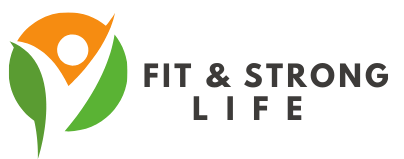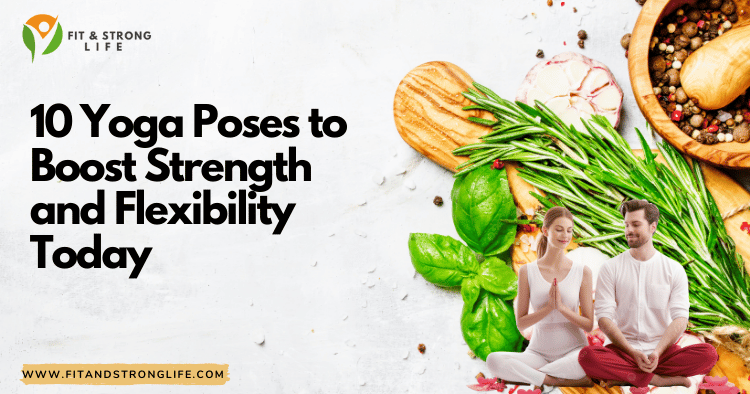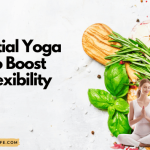Table of Contents
- Introduction
- Benefits of Yoga for Strength and Flexibility
- Yoga Poses to Boost Strength and Flexibility
- Downward-Facing Dog
- Warrior I
- Warrior II
- Plank Pose
- Chair Pose
- Bridge Pose
- Triangle Pose
- Crow Pose
- Cobra Pose
- Pigeon Pose
- Frequently Asked Questions
- Conclusion
Introduction
Are you looking to enhance your physical strength and flexibility? Yoga is a fantastic way to achieve these goals while also promoting mental clarity and relaxation. In this blog post, we’ll explore ten powerful yoga poses that can help you build strength and flexibility today. Whether you’re a seasoned yogi or just starting out, these poses can be easily incorporated into your routine to give your body the boost it needs.
Yoga not only strengthens the body but also calms the mind. A holistic approach to fitness.
Benefits of Yoga for Strength and Flexibility
Before we dive into the poses, let’s take a moment to discuss the benefits of practicing yoga for strength and flexibility. According to the American Council on Exercise, yoga can enhance muscular strength, endurance, and flexibility while also improving balance and coordination.
Key Benefits:
- Increased Muscle Strength: Many yoga poses require you to lift and support your body weight, which builds strength in various muscle groups.
- Improved Flexibility: Regular practice encourages the elongation of muscles and tendons, leading to greater overall flexibility.
- Enhanced Posture: Strengthening your core and back muscles through yoga can lead to improved posture in your daily life.
- Stress Relief: Yoga encourages mindfulness and relaxation, which can help alleviate stress and improve mental health.
“Yoga is the journey of the self, through the self, to the self.” – The Bhagavad Gita
Yoga Poses to Boost Strength and Flexibility
Let’s explore ten yoga poses that specifically target strength and flexibility:
3.1 Downward-Facing Dog
How to Do It:
- Begin on your hands and knees in a tabletop position.
- Spread your fingers wide and tuck your toes under.
- Lift your hips up and back, straightening your legs and arms.
- Hold for 5-10 breaths.
Benefits: This pose strengthens the arms, shoulders, and legs while stretching the spine, hamstrings, and calves.
Downward-Facing Dog is often referred to as a resting pose, but it’s a powerhouse for strength and flexibility!
3.2 Warrior I
How to Do It:
- Stand tall and step your left foot back, bending your front knee.
- Raise your arms overhead, keeping your shoulders relaxed.
- Hold for 5-10 breaths before switching sides.
Benefits: Warrior I builds strength in your legs, core, and back while promoting balance and focus.
3.3 Warrior II
How to Do It:
- From Warrior I, turn your torso to face the side and extend your arms parallel to the floor.
- Look over your front hand, keeping your knees bent.
- Hold for 5-10 breaths, then switch sides.
Benefits: This pose enhances leg strength and flexibility in the hips and groin.
3.4 Plank Pose
How to Do It:
- Start in a push-up position, with your wrists under your shoulders and body in a straight line.
- Engage your core and hold for 20-60 seconds.
Benefits: Plank pose strengthens the arms, shoulders, core, and legs.
Plank Pose is the foundation for many advanced poses, making it essential for building core strength.
3.5 Chair Pose
How to Do It:
- Stand with your feet together and sit back as if in an imaginary chair.
- Raise your arms overhead, keeping your back straight.
- Hold for 5-10 breaths.
Benefits: This pose strengthens the thighs, calves, and spine while improving balance.
3.6 Bridge Pose
How to Do It:
- Lie on your back, knees bent, feet flat on the ground.
- Press your feet into the floor and lift your hips towards the ceiling.
- Hold for 5-10 breaths.
Benefits: Bridge pose strengthens the back, glutes, and legs while opening the chest and hips.
Bridge Pose is a wonderful way to counteract the effects of prolonged sitting, promoting spinal health.
3.7 Triangle Pose
How to Do It:
- Stand with your feet wide apart and extend your arms out to the sides.
- Reach your front hand towards your front foot, creating a triangle with your body.
- Hold for 5-10 breaths, then switch sides.
Benefits: This pose improves flexibility in the legs, hips, and spine while strengthening the core.
3.8 Crow Pose
How to Do It:
- Start in a squat position, placing your hands on the ground in front of you.
- Bend your elbows and shift your weight forward, lifting your feet off the ground.
- Hold for a few breaths.
Benefits: Crow pose strengthens the arms, wrists, and core while improving balance and focus.
Crow Pose challenges your fear of falling – embrace it and find your balance!
3.9 Cobra Pose
How to Do It:
- Lie on your stomach, placing your hands under your shoulders.
- Press into your hands and lift your chest off the ground, keeping your elbows slightly bent.
- Hold for 5-10 breaths.
Benefits: Cobra pose strengthens the spine, opens the chest, and stretches the shoulders.
3.10 Pigeon Pose
How to Do It:
- Start in a tabletop position, bringing your right knee forward towards your right wrist.
- Extend your left leg back, keeping your hips square.
- Lean forward to deepen the stretch, holding for 5-10 breaths, then switch sides.
Benefits: This pose opens the hips and stretches the thighs, promoting overall flexibility.
Pigeon Pose is a favorite for releasing tension in the hips – a common area of tightness for many.
Frequently Asked Questions
Q1: How often should I practice these poses to see results?
A1: Practicing these poses 3-4 times a week can yield noticeable improvements in strength and flexibility over time.
Q2: Do I need any special equipment?
A2: No special equipment is needed, but a yoga mat can provide comfort and stability.
Q3: Can beginners do these poses?
A3: Yes! These poses can be modified for beginners. Always listen to your body and consult a yoga instructor if you need guidance.
Q4: How long should I hold each pose?
A4: Holding each pose for 5-10 breaths is a good starting point. As you progress, feel free to hold them longer.
Start where you are, use what you have, and do what you can. Every little bit counts!
Conclusion
Incorporating these ten yoga poses into your routine can significantly boost your strength and flexibility. Remember, consistency is key! As you practice, focus on your breathing and listen to your body. With time, you’ll notice improvements not only in your physical abilities but also in your overall well-being. Happy practicing!
For more information on yoga and its benefits, you can refer to Top 10 Essential Yoga Poses for Beginners. This resource offers additional insights into starting your yoga journey effectively. Also, explore 10 Advanced Yoga Poses for Ultimate Flexibility and Strength to challenge yourself as you progress.




